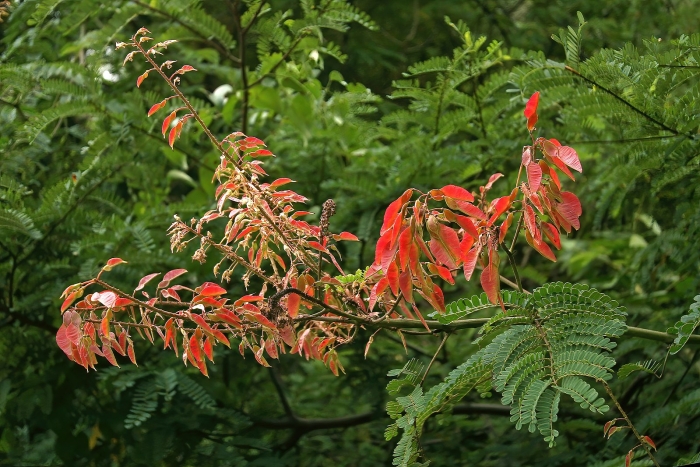Redwing
(Pterolobium stellatum)
Redwing (Pterolobium stellatum)
/
/

SAplants
CC BY-SA 4.0
Image By:
SAplants
Recorded By:
Copyright:
CC BY-SA 4.0
Copyright Notice:
Photo by: SAplants | License Type: CC BY-SA 4.0 | License URL: http://creativecommons.org/publicdomain/zero/1.0/deed.en | Uploader: SAplants | Publisher: Wikimedia Commons |



































Estimated Native Range
Summary
Pterolobium stellatum, commonly known as Redwing, is a perennial flowering plant native to dry bushland, thicket, and savanna ecosystems in Eastern and Southern Africa. It is a member of the legume family, Fabaceae. Young plants exhibit hairy stems and leaves, while mature specimens develop scrambling rope-like branches with recurved thorns or conical knobs, an adaptation to deter herbivores. Redwing reaches a typical height of 3-5 meters with a similar spread, forming a dense, thorny thicket. The plant produces cream-colored inflorescences composed of dense compound racemes (panicles) that are sweetly scented, attracting bees and butterflies. Flowering occurs mainly during the rainy season. The showy, brick-red to scarlet samaroid fruit, typical of the genus, turn brown as they mature and are a distinctive feature.
Redwing is valued for its ornamental flowers and fruit, which provide visual interest and wildlife support. It is used in cultivation for hedges, barriers, and as a feature plant in xeriscapes due to its drought tolerance. Redwing requires full sun and well-drained soils, and it is relatively low-maintenance once established. It is not commonly found in nurseries but can be propagated from seed or cuttings. Gardeners should be cautious as the thorns can make pruning and maintenance challenging. There are no widely recognized cultivars of Pterolobium stellatum in the horticultural trade.CC BY-SA 4.0
Redwing is valued for its ornamental flowers and fruit, which provide visual interest and wildlife support. It is used in cultivation for hedges, barriers, and as a feature plant in xeriscapes due to its drought tolerance. Redwing requires full sun and well-drained soils, and it is relatively low-maintenance once established. It is not commonly found in nurseries but can be propagated from seed or cuttings. Gardeners should be cautious as the thorns can make pruning and maintenance challenging. There are no widely recognized cultivars of Pterolobium stellatum in the horticultural trade.CC BY-SA 4.0
Plant Description
- Plant Type: Shrub
- Height: 6-14 feet
- Width: 5-12 feet
- Growth Rate: Moderate
- Flower Color: N/A
- Flowering Season: Fall
- Leaf Retention: Deciduous
Growth Requirements
- Sun: Full Sun
- Water: Low
- Drainage: Medium
Common Uses
Bird Garden, Border Plant, Butterfly Garden, Low Maintenance
Natural Habitat
Native to dry bushland, thicket, and savanna ecosystems in Eastern and Southern Africa
Other Names
Common Names:
Scientific Names: , Pterolobium stellatum, Pterolobium lacerans, Pterolobium exosum, Pterolobium abyssinicum, Pterolobium kantuffa, Acacia stellata, Mimosa kantuffa, Caesalpinia ligulata, Cantuffa exosa
GBIF Accepted Name: Pterolobium stellatum (Forssk.) Brenan